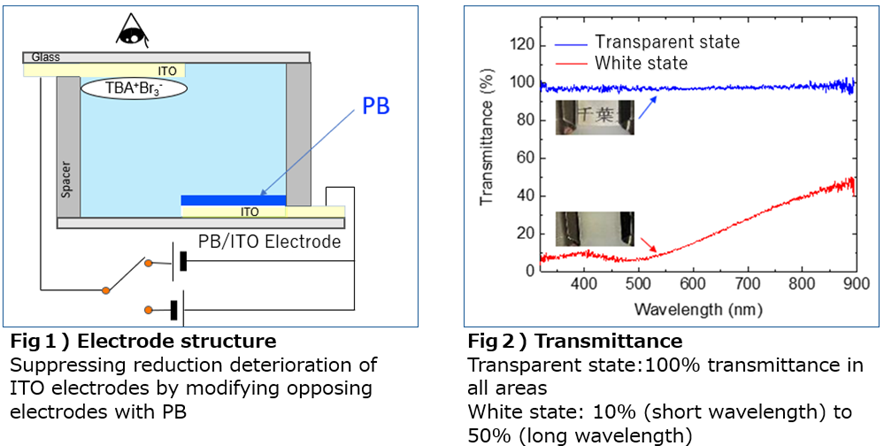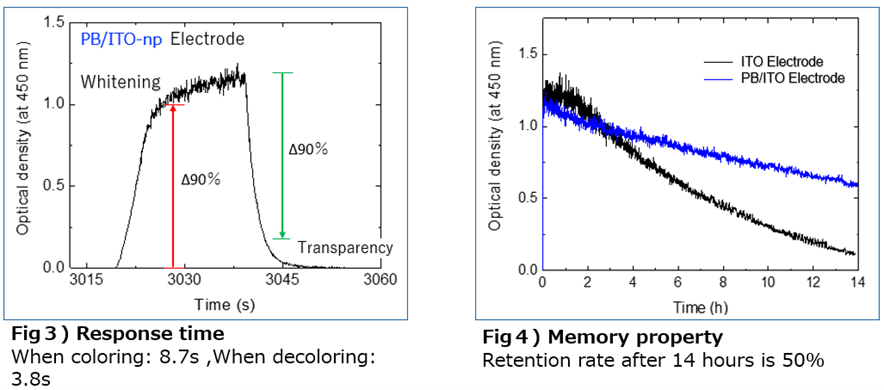Advantage and Core Benefit
- ON-OFF Sometimes, a few Volts of voltage are added; there is no need for constant energization
- The world’s first electrochromic method to achieve white color
Background and Technology
Smart windows are windowpanes that reversibly change optical properties (transmission, reflection, color, etc.) without blinds or curtains. They are expected to reduce the heating and cooling load, especially in buildings and moving objects.
In the liquid crystal method, since the direction of the liquid crystal controls the transmission of light, it is possible to instantly switch between transparent and white. Still, when transparent, it is necessary to continuously apply a voltage of several tens of volts, which is a problem from the viewpoint of energy use. In addition, the electrochromic method changes from transparent ⇔ color only when a voltage of several V is applied, only when it is ON / OFF. Still, since it is limited to colored colors such as blue, it does not effectively block heat. There are drawbacks, such as it may cause unpleasant light and glare to people.
Therefore, the researchers used indium tin oxide (ITO) as the electrode in an electrochromic method and modified the counter electrode with Prussian blue (PB) to reduce the reduction degradation of the ITO electrode and further reduce the voltage during color extinguishing when it is turned on and off.
Data
 |
 |
Patent
Patent Pending
Researcher
Katsuyoshi Hoshino (Chiba University, Center for Shared Equipment, Project Professor)
Expectations
We believe this technology holds promise for commercializing the world’s first transparent white electrochromic smart window with low power consumption. We are looking for companies that can advance research to commercialize this technology. We would like to have researchers participate as advisors and work together to commercialize the project.
Project.DD-04942


